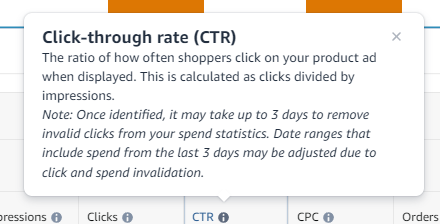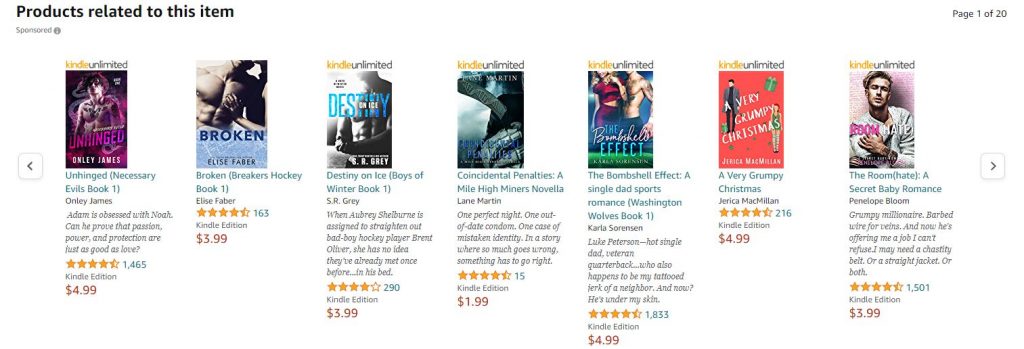How to know when to change your book cover
Every book and story is different, but if I had to pick a single element that was most commonly at fault for poor sales, I would point to covers without any hesitation. We all know that we shouldn’t choose a book by it’s cover, but most readers do it anyway, and for good reason. Whether browsing top 100 lists, scrolling through search results or just looking at also bought recommendations, few people have time to drill into every option to read blurbs or analyze reviews. Instead, they narrow the list down to just a handful that warrant further investigation, and the easiest and most obvious criteria available to do that is the cover. Images that catch a reader’s eye and spark their interest are the ones they’ll be drawn to first, giving those books a huge advantage over ones with less appealing covers.
Of course, there are many reasons why your book may be underperforming, so Ginger is here with some advice on how to figure out whether the problem is your cover, and whether changing it would likely lead to an increase in sales.
Somebody once described authors as the ultimate contradiction. On the one hand, wannabe authors are cursed with extreme narcissism for believing that the world needs to read whatever it is they’ve written. Yet, at the same time, many of those same authors are struck with crippling self-doubt and the ever-present specter of “imposter syndrome.”
This self-doubt is often demonstrated by questioning which elements of a self-published book might need to be changed – and frustratingly, it’s a question that genuinely needs to be asked to ensure that as many visitors to your product page “convert” into paying customers.
But how can you genuinely know which elements need to be changed or not?
Well, a couple of months ago I answered that question with a post about using Advertising on Amazon to test changes to your book’s cover, blurb, and Look Inside. This is the ‘right’ way to test changes and to have quantifiable justification for keeping or ditching things – however, you don’t always have to make things quite so complicated.
The other day, an author asked me if I thought she should update the cover to her self-published romance novels and the answer was actually right there in front of us, thanks to the Advertising on Amazon campaigns we’d been building together (and, remember, if you need help with your Facebook advertising or Advertising on Amazon, we offer 1-on-1 consulting to do just that!)
The figure that answered that question was hidden in plain site – the Click Thru Rate (CTR) of her Advertising on Amazon campaigns.

For most of the elements of a books product page, the important information about what works or doesn’t work is linked to the conversion rate of your book – as in, how many visitors to a book product page end up clicking the “Buy Now” button.
However, the title and cover of your book exist outside of your product page, and that means the information linked to them tells a different story.
The cover to your book is what potential customers see in their Sponsored search results, or in the Products Related To This Item ribbon – and only what they see. These two elements exist not just to sell your book, but also to “sell” your product page and drive traffic to go and check out your book.
Therefore, figures exist related to the cover of your book that are independent of “conversions” and these figures tell a pretty clear story about whether or not your book’s cover is working for you.
Judging a book by its cover
When you launch a Sponsored Product campaign using Advertising on Amazon, the algorithm has to decide where and when to show your book to potential customers. This is decided depending on the competitiveness of your Bid weighed against the Relevance of your book to a particular keyword.
If Amazon decides to show your book to a potential customer, it’ll either appear in a customer’s search results or in the Products Related To This Item ribbon of Sponsored Content. Each time a customer sees your book, it’s considered an Impression. That’ll look something like this:

As you can see, potential readers will have only your book title, cover, and potentially a tagline to convince them to click on your ad and be delivered to your product page; and the sum of your Impressions divided by the number of Clicks your book gets produces the Click Through Rate (CTR).
You’ll be able to pretty quickly tell how hard your book cover is working for you by glancing at that CTR – because the more appropriate and attractive your cover is, the more likely readers are to click on it and the higher than percentage will be.
For example, one of my best-performing books has a CTR of 0.79% – which is the sum of 6,591 impressions divided by 52 clicks. Before I changed the cover of it, my worst-performing book had a CTR of 0.13% – the sum of 133,125 impressions resulting in 170 clicks.
Because the cover of the book is the largest, most prominent feature of your ad, it stands to reason that the number of Clicks you receive has a direct correlation with how hard that cover image is working for you.
So, what’s a good CTR?
Statistics being what they are, it’s difficult to just shoot out a figure and say that this is the CTR you should be aiming for – but clearly the cover that generated a CTR of 0.79% seems to be more effective than the cover of a book that generated a CTR of 0.13%. The audience that ad was being shown to clearly didn’t feel the urge to click through and check out the book’s product page nearly as often as they did with the first ad.
To my mind, though, the figure you should be aiming for is squarely in and above the modest, 0.25% range. That means one out of every four hundred people who see your book’s cover in their Search results or a Sponsored Product ribbon end up clicking on it. Obviously, the higher the percentage the better, and conversely you can still advertise effectively with a lower CTR, but it’s a good figure to aim for as you think about which elements of your book to refine.
However, there are two additional things to bear in mind.
Firstly, your CTR is clearly going to be impacted by which keywords you’re using, and the audience who receive Impressions of your book. If you’re advertising a steamy romance novel, but you’re advertising it using keywords more related to cozy or clean romances, it stands to reason that fewer of them will click on the “rawwrr, manchest” cover of your book. This doesn’t mean that your cover is wrong. It just means it’s wrong for that particular audience.
Likewise, just because you have a lower CTR, it doesn’t necessarily mean that your cover is wrong. One of my best-performing advertising campaigns is for a book with a brand-new cover and while the CTR is a seemingly dismal 0.09%, my conversion rate is an astonishing 1-in-3 (meaning for every three clicks I receive, one of them turns into a paid sale.)
However, I can explain that: It’s a non-fiction book on Intermittent Fasting, so it appeals to a very specific audience looking for a very specific type of book, even though I’m advertising it using fairly general keywords specific to the weight loss and nutrition categories on Amazon. The low CTR actually turns out to be an advantage because the cover is helping “self select” the people who click on my ad, meaning I’m not burning through my budget on clicks that don’t end up converting into paid sales.
In more general categories like Romantic Suspense, your CTR is absolutely a barometer of how effective your cover is; since your book will be displayed alongside other books which promise the same thing to potential readers. That’s why it’s very, very important to make sure your book has a cover that looks like it “belongs” alongside competing books.
Does your book meet the dress code?
I went into this in a little more depth in this blog post, but the general idea is simple: Your book needs to have a cover that looks like it belongs alongside other titles in that category. This is where your CTR can provide an instant at-a-glance insight into whether your cover works for you or not.
If you’re confident you’ve chosen appropriate keywords to reach your ideal audience – perhaps the author names and book titles from the Top 100 of your chosen category – you should definitely hope to have a CTR of 0.25% or above. If you don’t, then there’s something about your cover which is clearly putting your audience off from clicking on it.
If that’s the case with your book, try comparing your cover side-by-side with the Top 100 in your category. For me, this was when the penny dropped and I realized that the best-performing books all tend to have a “dress code” for elements that appeal to potential readers; and my book didn’t meet that code!
I felt a sinking in my gut when I realized that the bestselling books in my category all shared similar typography, color palettes, and design elements – elements that the book I was struggling to advertise didn’t!
While I’d loved the cover I’d picked out – it really spoke to me – it wasn’t consistent with the style that was most popular in that category, and when I compared them I realized my book looked like a guy who’d turned up to a fancy “black tie” reception in jeans and a t-shirt.
I designed and uploaded a new cover and the results spoke for themselves pretty much instantly. My CTR tripled almost overnight, and that provided inarguable evidence without having to spend weeks running test campaigns to prove that point.
Although, maybe it’s better than you think!
On a slightly happier note, the author I mentioned above – the one who’d been agonizing about whether or not to change the cover of her book – got a pleasant surprise when I pointed out that her CTR of 0.32% was a relatively healthy one. Obviously, it could be better; but it could also have been a lot, lot worse.
Ultimately, her existing cover was still providing her with a decent number of low-cost clicks, and so I was able to convince her that she didn’t need to obsess about changing it. Being able to take the second-guessing out of your cover design with a simple glance at your CTR helps free up a lot of mental energy which can be redirected to improving your book’s performance in other areas (or in writing the next one.)
So, if you’re pondering whether or not to change your cover, go and check out your advertising stats. The answer to that question might already be staring you squarely in the face!












Good information that offers some concrete numbers on CTR. Very helpful. The “dress code” idea was something I noticed but haven’t acted on yet. I will have to experiment with the “dress code” in the near future.
Thanks, an interesting article. I recently conducted a survey with the single question “From the list below which is the single most important factor when selecting an eBook written by an author who is new to you?” Unsurprisingly, the cover is one of the options. If anyone is interested, ‘Choosing what to read’ is free to read at: https://www.rjgould.info/newsletters
That’s an interesting survey RJ, thanks for sharing. At first glance I was a bit surprised that the covers weren’t a big percentage but I have a feeling I know why. The question you’re asking in that survey is a bit different and thus those results are a bit misleading if you try to apply them to the same thing we’re talking about here. What I mean is, you’re asking readers what makes them buy a book from all the info on the product page – which means that they’ve already landed on the book itself. From that perspective, I think your results are probably pretty accurate – if anything, I’m surprised that the cover answers are even as high as they are because once you have access to all that other info, the cover should matter a lot less. You can read the blurb, click the look inside, read the review comments, etc. But the issue we’re talking about more specifically in this article is driving people to that product page in the first place. To do that, you are relying on what the reader has access to at that point, and for the most part, that’s just the cover. They can’t read the blurb or review comments, or click the look inside, unless they’ve actually gotten to the product page. So it’s the cover that drives them to give the book a chance and look at the rest of the info, but once they have made that decision, the cover itself should factor less in whether they actually make the purchase.
Thanks for your reply – and yes, I agree they are different measures, hopefully both of value. (Most of my respondents are UK-based which might also be an influence)